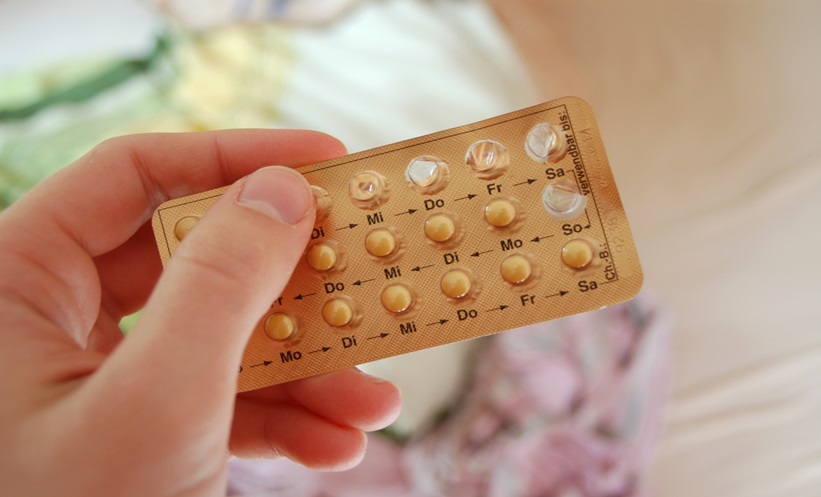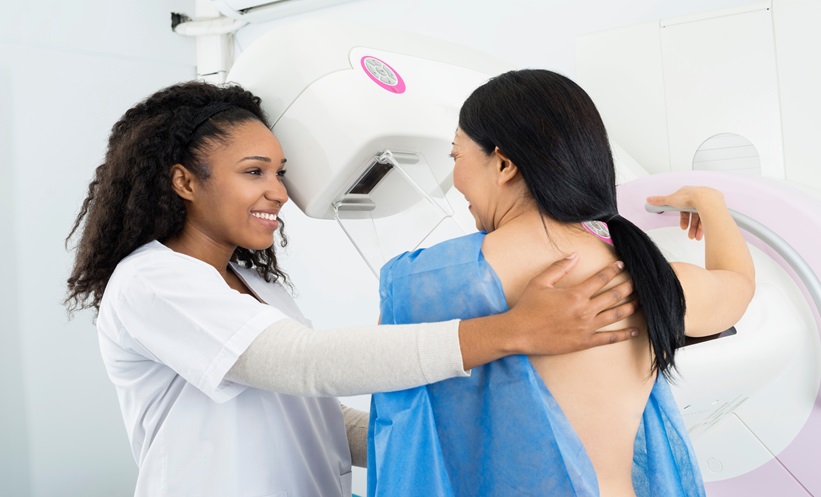Interviewee: Ali Kubba, London Bridge Hospital, London, UK
Disclosure: Kubba has received honoraria for speaking at meetings and attending advisory boards from Gedeon Richter, Bayer, Exeltis, and Mithra.
Acknowledgements: Medical writing assistance was provided by Carolina Rojido, Scientific Writers Ltd, Edinburgh, UK.
Support: This article has been sponsored, commissioned, and paid for by Gedeon Richter. The company has reviewed the content for factual accuracy and compliance purposes.
Citation: EMJ. 2021;6[4]:21-24.
THE CURRENT CONTRACEPTIVE LANDSCAPE
Increased contraceptive choice is a pivotal shift in modern contraception that has improved the autonomy of females and may help to better match contraception to their individual and cultural identities. Females today have a variety of contraceptives to choose from. These include short-acting reversible contraceptives such as oral contraceptives (OC), vaginal rings, barrier methods, condoms, transdermal patches, and emergency contraception, and long-acting reversible contraceptives (LARC) such as intrauterine devices, injectable, or implantable methods.1,2
Kubba explained that in the last few years, the pattern of contraceptive use has changed. Females of all ages are looking for higher contraceptive efficacy and convenience to better fit their busy lifestyles. They favour non-daily methods and additional therapeutic effects (cycle regulation, controlling heavy bleeding, dysmenorrhoea reduction, and acne control). The National Survey of Sexual Attitudes and Lifestyles (Natsal) in the UK surveys a large representative sample of males and females every 10 years. Data from 1999–2000 and 2010–2012 from Natsal 2 and 3 revealed that the use of daily OCs, male and female sterilisation, and less effective methods (condom, rhythm, and withdrawal) decreased from 76.6% to 63.7%, and the use of LARC such as intrauterine devices (copper or hormonal) and implants increased from 5.4% to 13.2%.3
Healthcare professionals (HCP) should ensure collaborative decision making when counselling their patients about contraceptives. Kubba uses a mnemotechnic formula, ‘A, B, C, D, Go’:
A) Agenda. Discuss the females’ priorities regarding health, sexual wellbeing, and therapeutic needs.
B) Body and soul. First, consider medical history to identify health risks and contraceptive method contraindications. Next, consider mental health aspects (mood problems, premenstrual syndrome, libido).
C) Choice. Discuss the available contraceptive options that fit the females’ health status and priorities.
D) ‘Did you know?’ HCPs can often provide additional information to make sure that they are counselling females as thoroughly as possible.
WHAT IS EVRA?
Evra® (Gedeon Richter Plc., Budapest, Hungary) is a transdermal hormonal contraceptive patch measuring 20 cm2. It consists of a three-layered matrix that contains a combination of hormones, 6 mg norelgestromin and 600 µg ethinyl oestradiol.4 It releases an average of 203 µg of norelgestromin and 33.9 µg of ethinyl oestradiol every 24 hours.4
Since Evra is a CHC, Kubba recommends HCPs should explain to their patients about the corresponding class effects regarding mechanism of action, efficacy, and side effects. It works by inhibiting ovulation through suppression of the hypothalamic/pituitary/ovarian axis. The oestrogenic and progestational components thicken cervical mucus and render the endometrium unsuitable for implantation.4 It differs from combined OCs due to its convenient delivery system, based on a weekly schedule rather than daily ingestion. The patch is harder to forget than an OC because it is visible to the female. It could be a welcome choice for females who have gastrointestinal problems, take laxatives, or have eating disorders. As it circumvents the digestive tract, it protects females from hormonal fluctuations caused by sporadic indigestion or gastroenteritis. The ease of use and steady hormonal delivery aid compliance, which is essential for effective contraceptive use. Inconsistency exposes females to unplanned pregnancies.5 Flexibility has been demonstrated in a systematic review that investigated missed patch scenarios. The reviewers found two studies that evaluated the effect of deliberate dosing errors outside the patch-free interval. Both found that mean concentrations of ethinyl oestradiol and norelgestromin stayed within reference ranges for ovulation inhibition with up to 3-day dosing errors removing anxiety should a patch change be delayed.6 Moreover, females are instructed to change the patch every 7 days, and not to risk extending the patch-free interval.4
Regarding efficacy, Evra is comparable to other combined hormonal methods. On-therapy pregnancies occurred in only 15 participants out of 22,160 treatment cycles with Evra,7,8 except in females who weigh ≥90 kg, in whom efficacy may be slightly decreased.9 However, a Cochrane review of hormonal contraceptives in females who are overweight or obese did not find an association between higher BMI or weight and contraceptive efficacy.10
THE CLINICAL DATA ON EVRA’S SIDE EFFECT PROFILE
The most common side effects with Evra in clinical trials were headache (21.0%), nausea (16.6%), and breast tenderness (15.9%), but nausea and breast tenderness tend to improve after three cycles.4 A pooled analysis by Sibai et al.11 (N=3,330) found that 22.0% of females experienced breast symptoms (discomfort, engorgement, pain) mainly during the first two cycles.These symptoms were often mild or moderate (86.2%), and rarely led to discontinuation (1.9%).11
Regarding venous thromboembolism (VTE), a systematic review on VTE risk with non-oral CHCs found a statistically increased VTE risk in two of six studies.12 This potentially increased risk represents few events in absolute terms.12 Specifically, the number of VTEs per 10,000 females per year increases from 2 in non-CHC users, to 5–7 in levonorgestrel-containing CHC users, to 6–12 in norelgestromin-containing CHC users.4 Accordingly, HCPs need to inform females, and consider VTE risk factors when prescribing CHCs. Kubba added that transdermal contraception should not be confused with transdermal hormone replacement therapy, which is associated with a lower VTE risk.
Cycle control is good with Evra, with the dose comparable to a standard combined OC with 250 µg of norelgestromin and 35 µg of ethinyl oestradiol. In a large study (N=1,489) that compared Evra with an OC, there were no significant differences in cycle control. However, by Cycle 13, 8.2% in the patch group had breakthrough bleeding and spotting versus 12.0% in the OC group.5 In another large study (N=610) of different contraceptive patch sizes and OCs, breakthrough bleeding was reported in Cycle 3 in 13.0%, 4.2%, 3.6%, and 6.6% of participants using 10, 15, and 20 cm2 patches and OCs, respectively.13
COMPARABILITY WITH ORAL CONTRACEPTIVES
Evra is an alternative option with good satisfaction and consistent use rates. In an Italian study where 177 females using a contraceptive patch were followed for 6 months, 88% found it convenient or very convenient, 96% appreciated the once-weekly schedule, and 95% easily incorporated it into their lifestyle.14 Their satisfaction compared to their baseline method increased during the study (45.1% at baseline versus 86.3% at the last visit) and 78.1% preferred the patch over their previous method.14 A multinational European study found that 63.5% of OC users were satisfied or very satisfied, but compliance was poor, with only 22.2% of cycles fully compliant. After using the patch for six cycles, 88.2% were satisfied or very satisfied, and 90.5% of cycles were completed with perfect compliance.15
EVRA PATCH DESCRIPTION AND ADVICE FOR USERS
Evra can be applied to different parts of the body (buttock; abdomen; upper, outer arm; upper torso) on clean, dry, and healthy skin, without moisturisers, in a location where it will not be rubbed by tight clothing. It should never be applied to the breasts. Kubba advises females to apply the patch using the warmth of their hand to ensure it sticks, and to check the edges to ensure they are not turned up, as that would encourage detachment. The patch’s location has to be rotated weekly to avoid potential irritation, and changed on a designated day every 7 days, with 3 weeks on and 1 week off.4 Each consecutive transdermal patch should be applied to a different place on the skin to help avoid potential irritation, although they may be kept within the same anatomic site.4 HCPs should remind females that satisfaction improves with continued use.
Detachment is rarely a problem. Complete detachment occurs in 1.8% of cases and partial detachment in 2.8%.16 Nevertheless, females should regularly check the patch is in place, and if it detaches partially or completely, they have 24 hours to replace it. If >24 hours elapse, they should apply a new patch but also take additional non-hormonal precautions for 7 days.4 Kubba emphasised that if there was unprotected sex during that time, the individual should consider emergency contraception.
Harsh conditions derived from activities such as swimming, using a sauna, and sports do not affect the attachment or efficacy of the patch, and hormone levels remain within the reference range for contraception.17
FEMALES WHO MAY BENEFIT FROM EVRA
Evra may appeal to many females regardless of age. In Kubba’s experience, it is a good method for young females (<30 years of age) who have already used OCs for a few years and may fear missing doses and have had to use emergency contraception. They may prefer a method as efficacious as the pill with all its benefits, but that does not involve a daily routine. It is definitely a good method for those who are forgetful, have busy lives, have gastrointestinal problems, or experience breakthrough bleeding. For instance, female cabin crew on long-haul flights may be good candidates and it may also appeal to females looking after young children. Altogether, it is a good option for many females due to the flexibility of use, and overall better fit with their lives.
EVRA IN THE CURRENT CONTRACEPTIVE LANDSCAPE
Kubba considers that HCPs should provide females with the full range of contraceptive choices, so they can make the best selection for their individual needs. Evra fulfils an unmet need, and it is very important that it is offered as one of the methods available, while being careful not to promote it as a panacea. It is an option for females who have special needs, or lifestyles that do not fit a daily routine, and for those who want to try a transdermal method while keeping in mind the advantages and risks. Evra is not a LARC, but may be more convenient than a daily method that empowers those who want independence from a daily routine, and reassurance regarding contraceptive efficacy. Ultimately, it is advantageous as a general contraception to all females who want an effective and convenient method.








